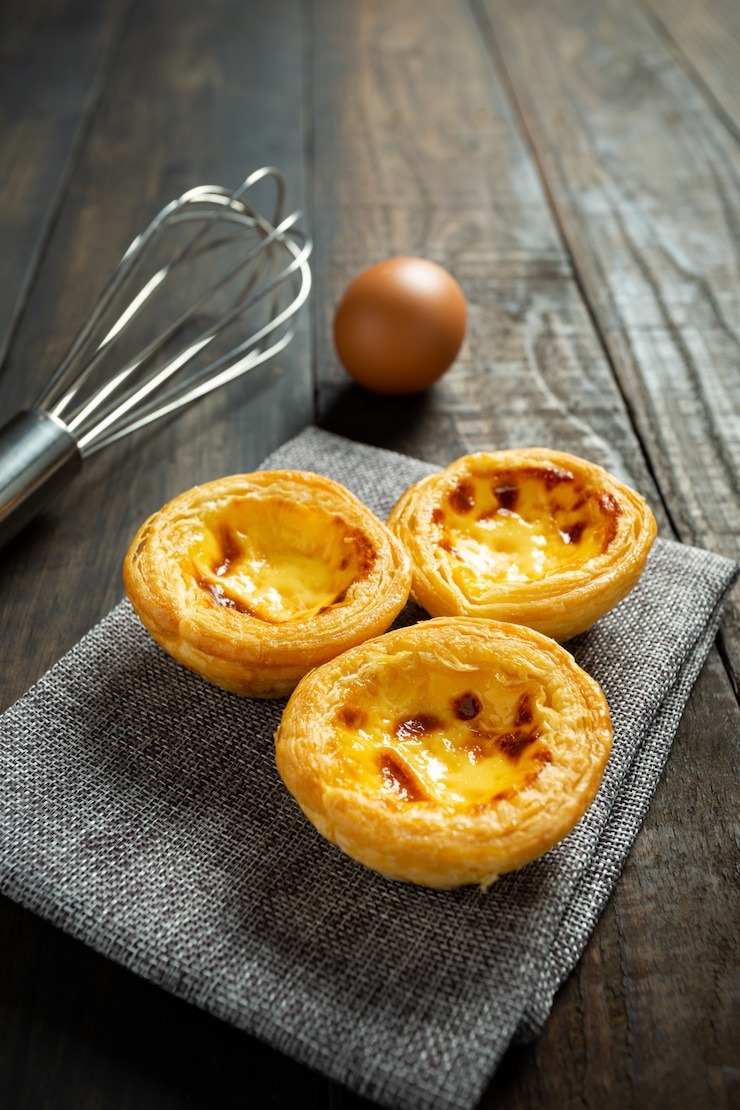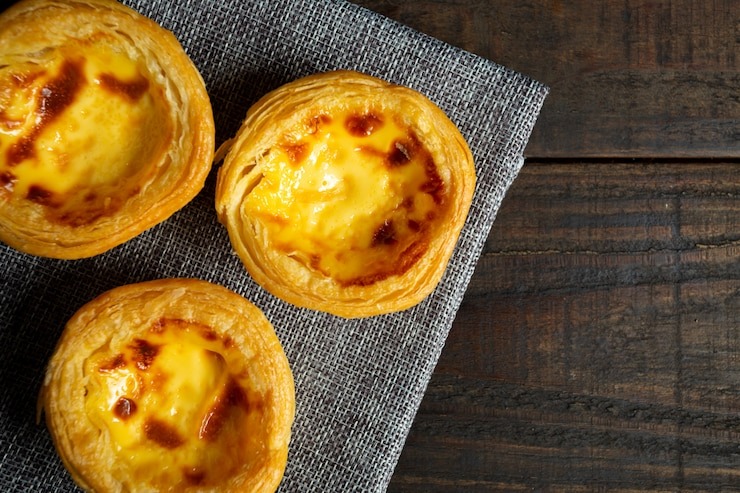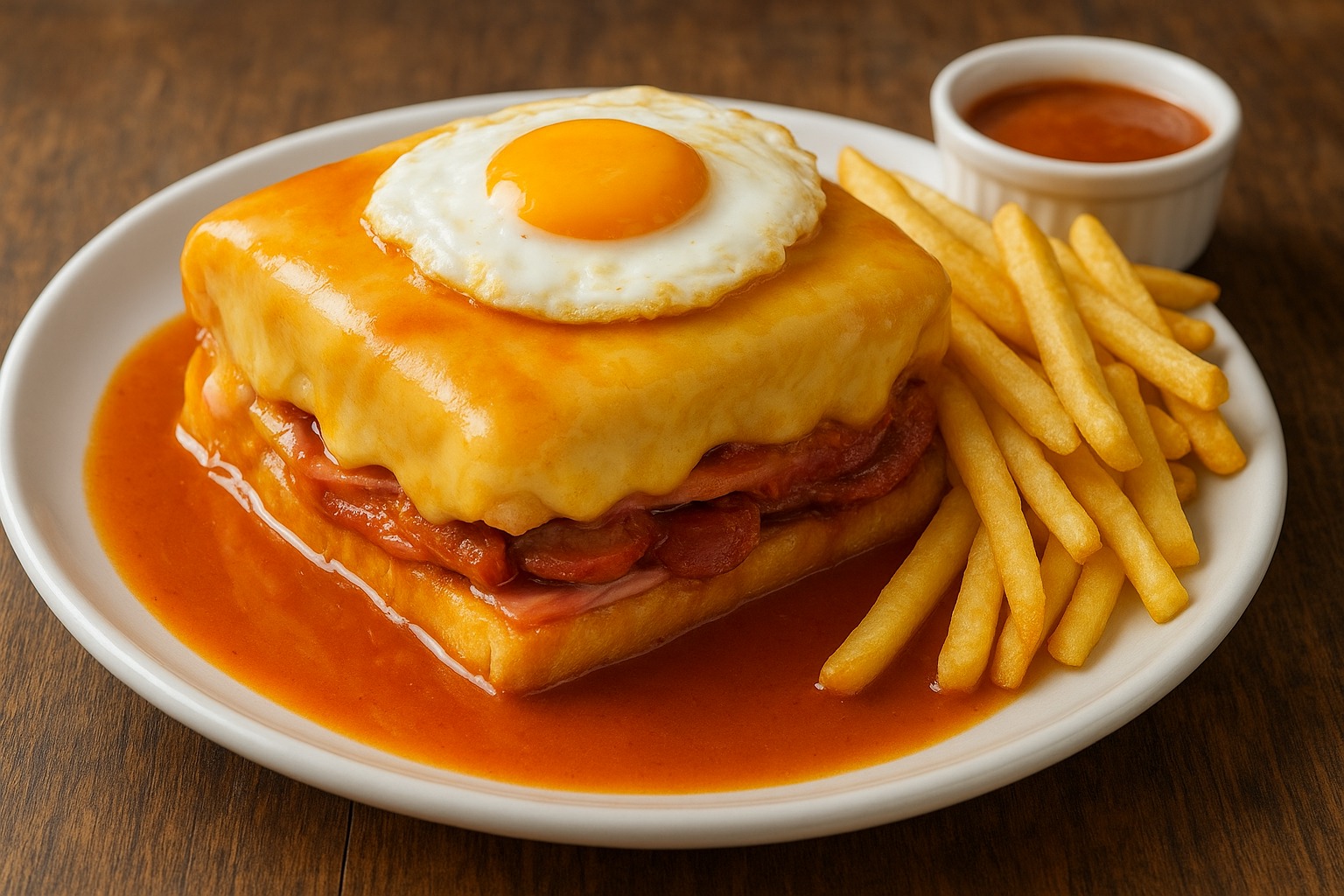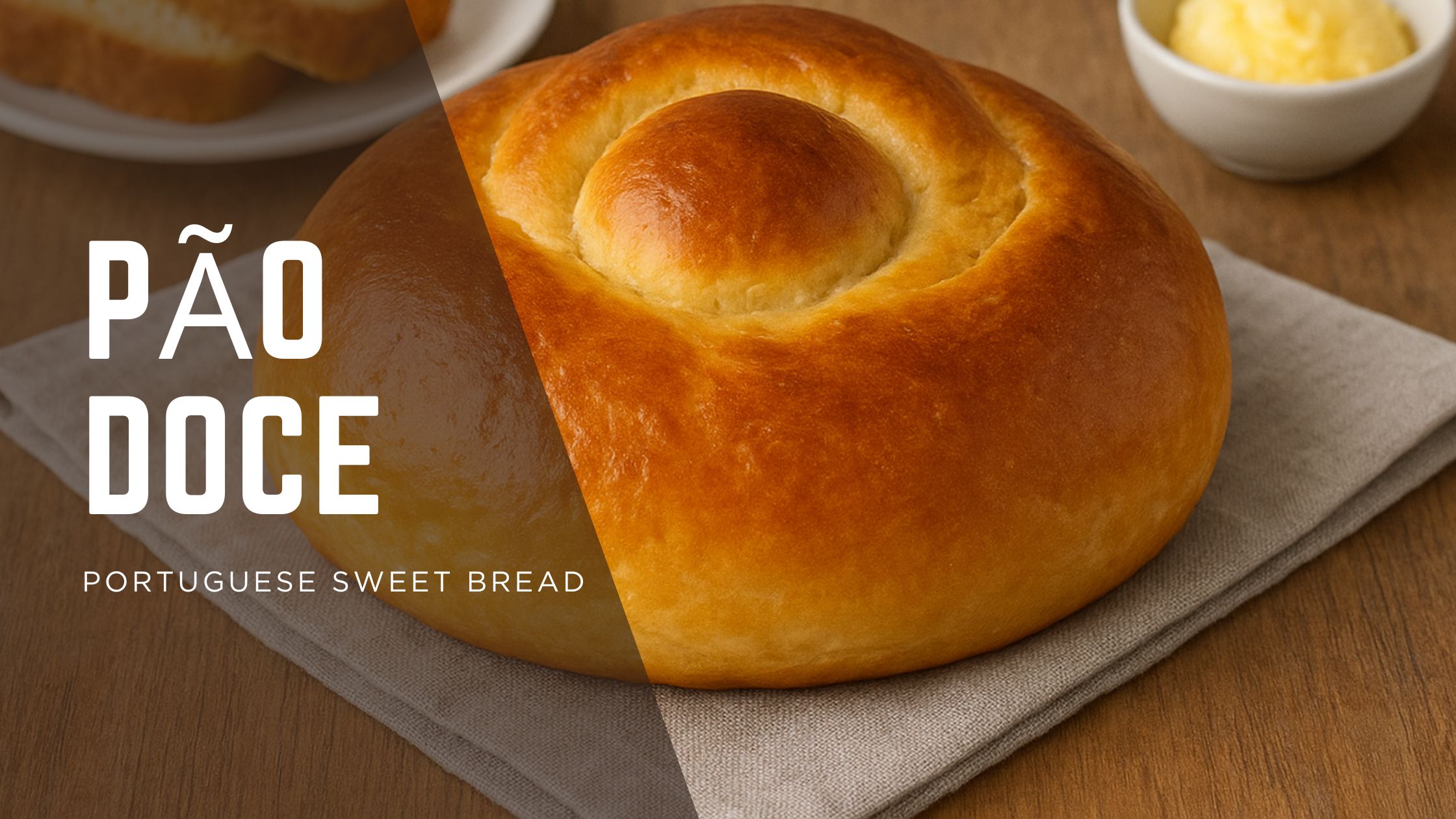Delight your palate with these iconic Portuguese custard tarts—a delicate puff pastry filled with creamy egg custard, baked until golden brown and lightly caramelized. Known in Portugal as Pastéis de Nata, and sometimes Pastéis de Belém, these rich, crunchy pastries have a fascinating history dating back to the monks of the Jerónimos Monastery near Lisbon in the 17th century.
1. The Rich History of Pie
- Origins: Created by the Catholic Order of Saint Jerome in Belém, near the Jerónimos Monastery. After the dissolution of the monasteries in 1834, a nearby bakery—the Fábrica de Pastéis de Belém—adopted the recipe in 1837.
- Today: The Belém version is still made behind closed doors; they sell more than 20,000 pies a day.
- Global Reach: These tarts spread throughout Portugal and former colonies like Macau, becoming beloved desserts around the world.
2. Necessary ingredients
Mass
- Wheat flour and salt
- Butter (or margarine)
- Cold water
- Puff pastry (store-bought or homemade) to make easy puff pastry cups.
Crème anglaise filling.
Whole milk
- Egg yolks (plus one whole egg optional)
- Sugar and flour (or cornstarch/corn starch)
- Cinnamon sticks and lemon zest optional
- A touch of vanilla (optional)
3. Equipment and Measurements
- 12 to 24 small tart or muffin tins
- Whisk, pan, bowl
- Rolling pin, cling film, cupcake pan if needed
- Preheat oven to a high temperature (230–250°C / 450–480°F)
4. Step-by-step instructions
A. Prepare the custard (10 to 15 minutes + cooling time)
- In a saucepan, heat the milk with the cinnamon stick (and lemon zest) until boiling. Remove from the heat.
- Beat the egg yolks, sugar, flour and a little milk until smooth.
- Slowly pour the hot milk into the egg mixture, stirring constantly, and strain it back into the saucepan.
- Return to low heat, whisk until thickened, remove from heat, and cover with plastic wrap. Let cool to room temperature.
B. Shape the dough (10 minutes + resting time)
- Roll out the puff pastry or laminated dough with a rolling pin, making it very thin.
- Brush with milk, sprinkle with cinnamon (optional) and roll out lengthwise, pressing well.
- Cut into portions, flatten into circles, and press into well-greased pans to form crispy cups.
- Cool the tart-lined tins while you prepare the oven and cream.
C. Bake (15 to 20 minutes)
- Preheat oven to at least 230°C (450°F), preferably 250°C (480°F).
- Fill each mold with chilled cream.
- Bake until the custard sets and the surface is covered in caramel bubbles. Rotate the pans halfway through to even out the color.
- Remove, let cool slightly and pour onto a wire rack.
5. Tips and Variations
Use ready-made puff pastry if you’re in a hurry. For best results, opt for buttered puff pastry.
Let the dough rest in the refrigerator between steps to achieve crispy layers.
Baking in a very hot oven on a preheated baking sheet gives you that crispy base and toasted topping.
Sprinkle with cinnamon and powdered sugar before serving.
6. Serving and Storage
Serve warm or at room temperature—either way, they’re perfect!
Store leftover pies in an airtight container; best consumed the same day, but can be refrigerated for up to 2 days.
To reheat: bake at 200°C for a few minutes to revive the crispiness.
7. Why you’ll love these pies
| Feature | Description |
|---|---|
| Texture | Crispy puff pastry cups with layers that melt deliciously |
| Filling | Silky, creamy egg custard with perfectly caramelized sugar |
| Flavor | Hints of cinnamon, lemon and vanilla enhance the rich flavor of the eggs |
| History | Strongly linked to Portugal’s culinary heritage and the Belém neighborhood in Lisbon |
| Versatility | Great for breakfast, dessert, snack or afternoon tea (especially with coffee!) |
8. Readers’ Comments and Ideas
- “They stayed crispy until the next day,” praised a housewife.
- “Making the dough tonight and I’ll tell you tomorrow!” – excited comment about the recreation of Lisbon.
9. Next time you bake
Try adding more lemon zest, substituting cornstarch, or using vanilla bean.
Try baking at a slightly higher temperature or switching to grill mode for an extra bubbly cream topping.
Use silicone puff pastry molds or individual molds to add a special touch.

10. Final Considerations
Portuguese custard tarts are more than just a recipe —they’re a delicious journey through Portugal’s past, from monastery kitchens to modern bakeries. With just a few basic ingredients—flour, butter, milk, egg yolks, and sugar—you can master this flaky pastry dessert at home. The result? A golden, creamy custard nestled in crisp, layered pastry cases.
Whether you’re baking for your next get-together with friends or enjoying a sweet treat during the week, these pies are sure to impress.



